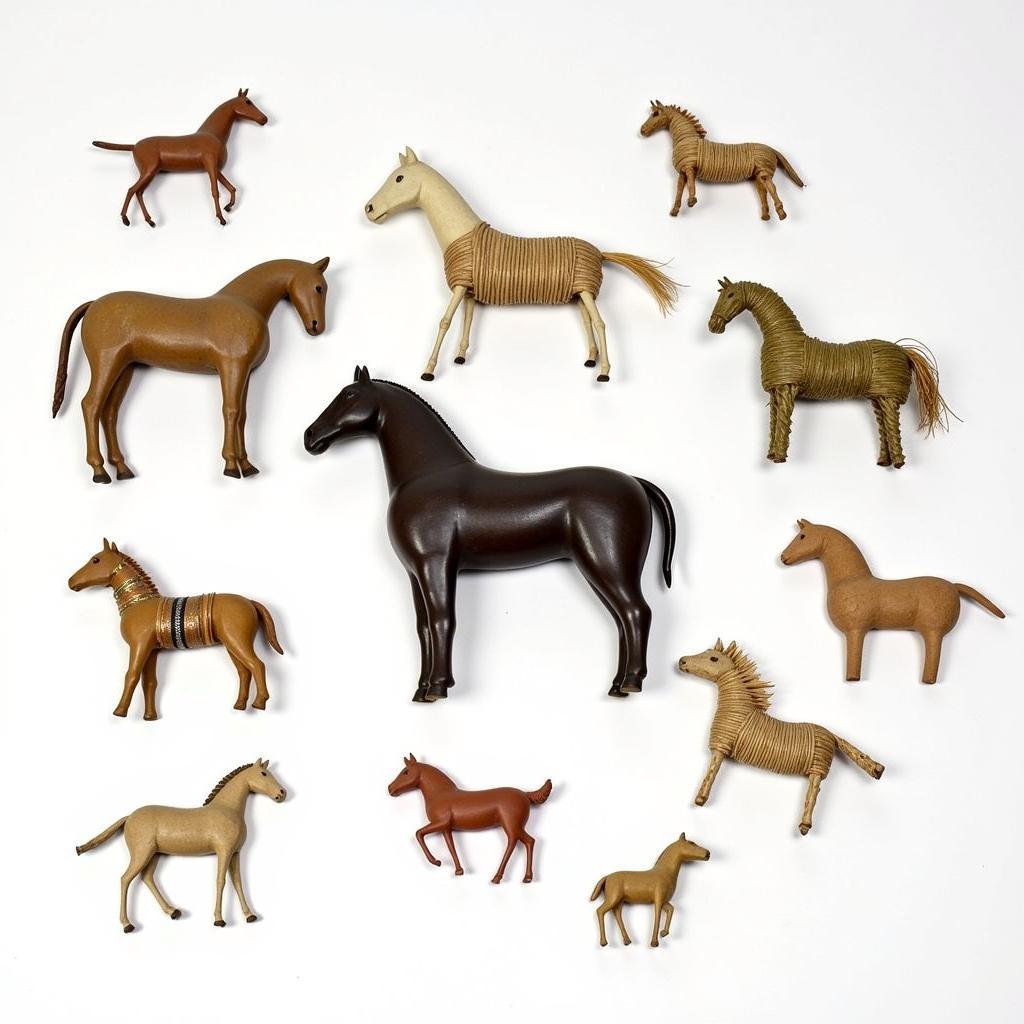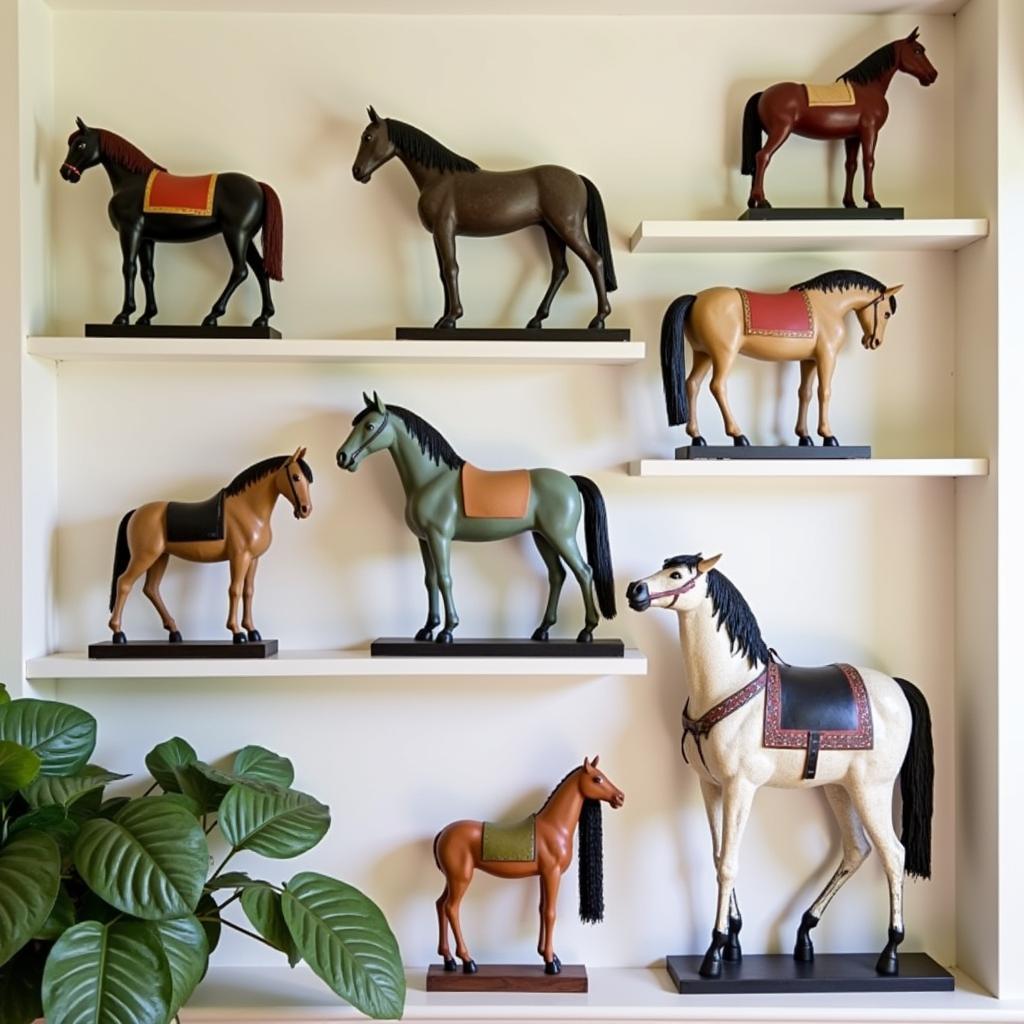Folk Art Horses hold a unique charm, capturing the spirit of creativity and tradition. From whimsical carvings to vibrant paintings, these artistic representations celebrate the horse’s enduring presence in our culture. Whether you’re a seasoned equestrian, an art enthusiast, or simply captivated by the equine form, exploring the world of folk art horses offers a fascinating glimpse into the rich tapestry of human expression.
A deep dive into the world of folk art horses reveals a captivating blend of history, craftsmanship, and cultural significance. These aren’t just decorative objects; they’re tangible expressions of our connection with these magnificent animals, reflecting diverse artistic traditions and personal stories. Let’s explore the diverse world of folk art horses, uncovering their origins, styles, and the enduring appeal they hold for collectors and admirers alike.
A Gallop Through History: The Origins of Folk Art Horses
Folk art, by its very nature, is deeply rooted in tradition. Folk art horses are no exception. They emerged from a time when horses were integral to daily life, serving as transportation, partners in labor, and symbols of power and freedom. Early examples often served practical purposes, like children’s toys or decorative elements for homes and barns.
Over time, these functional objects evolved into cherished artistic expressions, reflecting the unique styles and traditions of different cultures. From the simple, carved wooden horses of Scandinavia to the brightly painted clay figures of Mexico, each piece tells a story of the horse’s role in that particular society. Did you know that some cultures believed that depictions of horses could bring good luck or ward off evil spirits?
 Early Examples of Folk Art Horses
Early Examples of Folk Art Horses
Styles and Techniques: The Artistry of Equine Expression
The beauty of folk art horses lies in their incredible diversity. From rustic carvings to intricate paintings, a wide range of artistic styles and techniques are employed in their creation. Some artists favor natural materials like wood or clay, while others embrace vibrant colors and intricate detailing.
Some common styles include:
- Naive or Primitive: Characterized by simple forms and bold colors, often depicting horses with exaggerated features.
- Realistic: Striving for anatomical accuracy, these pieces capture the horse’s physical form in detail.
- Whimsical: Embracing playful designs and imaginative interpretations, these horses often feature vibrant colors and fantastical elements.
- Abstract: Exploring the essence of the horse through non-representational forms and colors.
It’s fascinating to consider how different artists bring their own unique vision to life, transforming simple materials into captivating works of art. Whether you’re drawn to the rustic charm of a carved wooden horse or the vibrant energy of a painted clay figure, there’s a folk art horse out there waiting to capture your imagination. You might even be inspired to create your own! You can find some great resources for printable horse coloring pages online. For instance, the printable horse coloring pages on Justus Horses USA is a great place to start!
Collecting and Caring for Your Folk Art Horses
For many, the appeal of folk art horses extends beyond simple admiration. Collecting these unique pieces can be a rewarding hobby, allowing you to connect with history, appreciate artistic talent, and build a collection that reflects your personal taste.
When caring for your folk art horses, it’s important to consider the materials they are made from. Wood and clay pieces may require special cleaning and preservation techniques to prevent damage. Researching the specific care requirements for each piece will help ensure its longevity and preserve its beauty for generations to come. Check out the resources on the Babieca horse and the legend horse on our site! They offer fantastic insights into equine history and mythology.
What are the different types of folk art horse depictions?
Folk art horses are depicted in various forms, from carvings and paintings to textiles and sculptures, each reflecting different cultural traditions and artistic styles.
How can I identify antique folk art horses?
Identifying antique folk art horses requires careful examination of materials, craftsmanship, and stylistic elements. Consulting with experts or researching reputable sources can help in authentication.
Where can I find folk art horses for sale?
Folk art horses can be found at antique shops, art galleries, online marketplaces, and specialized dealers. Justus Horses USA offers several articles, such as ones related to the Black Horse Extra and Darth Vader Horse, if you are interested in other unique horses!
What is the significance of horses in folk art?
Horses hold significant symbolic meaning in many cultures, representing power, freedom, and good fortune. Folk art horses reflect this symbolism, serving as both decorative objects and expressions of cultural beliefs.
How can I incorporate folk art horses into my home decor?
Folk art horses can add a touch of rustic charm and artistic flair to any home. They can be displayed on shelves, mantels, or incorporated into themed vignettes.
In conclusion, folk art horses offer a captivating glimpse into the intersection of art, culture, and our enduring fascination with these majestic animals. From their humble beginnings as functional objects to their current status as cherished collectibles, these artistic creations continue to inspire and delight. Whether you’re a seasoned collector, an art enthusiast, or simply drawn to the beauty of the equine form, exploring the world of folk art horses is a journey worth taking. Remember to check out our resources and get in touch if you have any questions.
 Displaying a Collection of Folk Art Horses
Displaying a Collection of Folk Art Horses
Need help with your horse or other pets? Contact us! Phone: 0772127271, Email: [email protected]. Visit us at QGM2+WX2, Vị Trung, Vị Thuỷ, Hậu Giang, Việt Nam. We have a 24/7 customer service team.